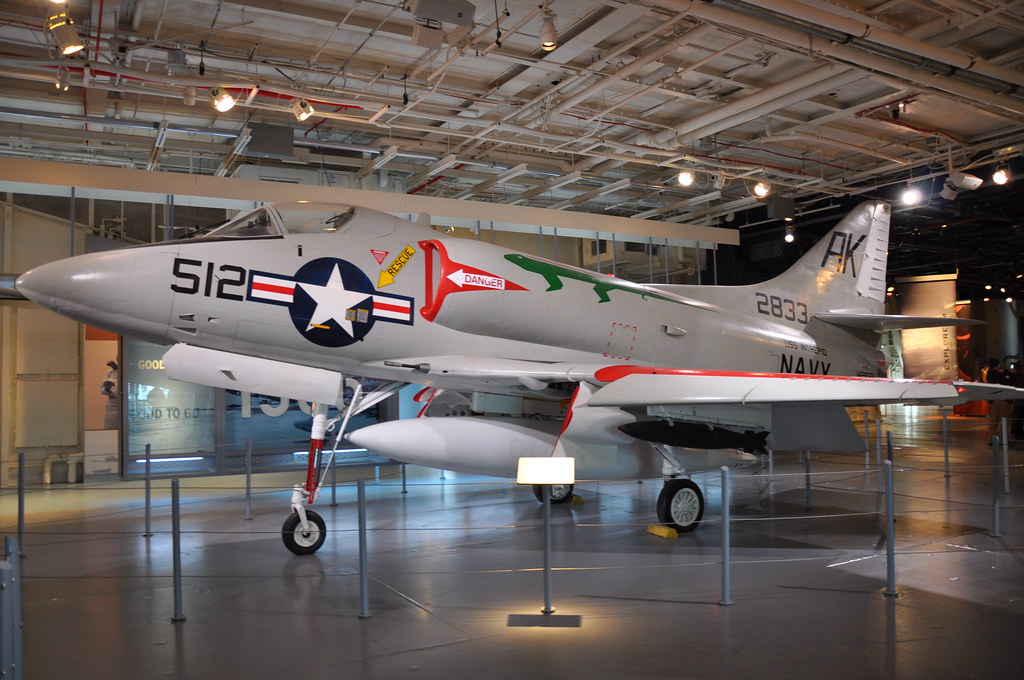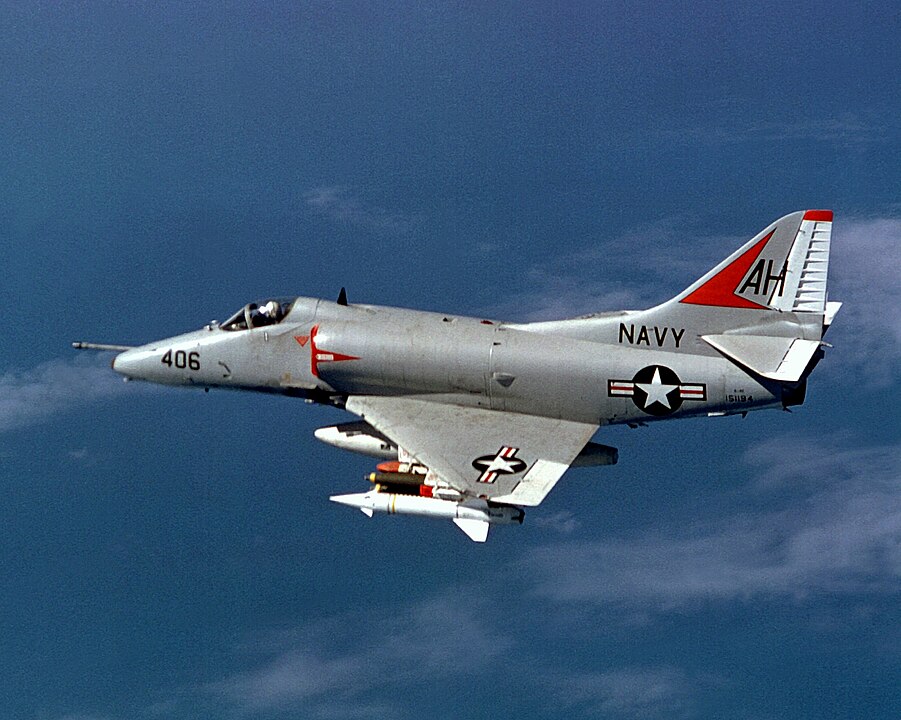
The Douglas A-4 Skyhawk stands as a testament to the power of simplicity and effectiveness in military aviation. As a lightweight attack bomber designed for the U.S. Navy and Marine Corps, the Skyhawk became an essential component of U.S. military power from its introduction in 1954 until its retirement in 2003.

The Skyhawk, affectionately dubbed the “Tinker Toy” for its small stature, was the brainchild of Douglas Aircraft Company designer Ed Heinemann. Heinemann’s design philosophy was to “Simplicate and Add Lightness.” This vision led to an aircraft that not only met but exceeded the Navy’s stringent maximum weight restrictions by a significant margin. The A-4’s small delta wing design eliminated the need for a heavy wing-folding mechanism, a feature commonly required for aircraft carrier storage. Engineers further reduced weight by minimizing the number of cockpit components and creating a wind-driven generator for power, eliminating the need for a heavy-duty battery. These innovations resulted in a highly maneuverable and cost-effective platform, with a unit price of around $860,000 USD, which was particularly impressive given the technological capabilities of the era.
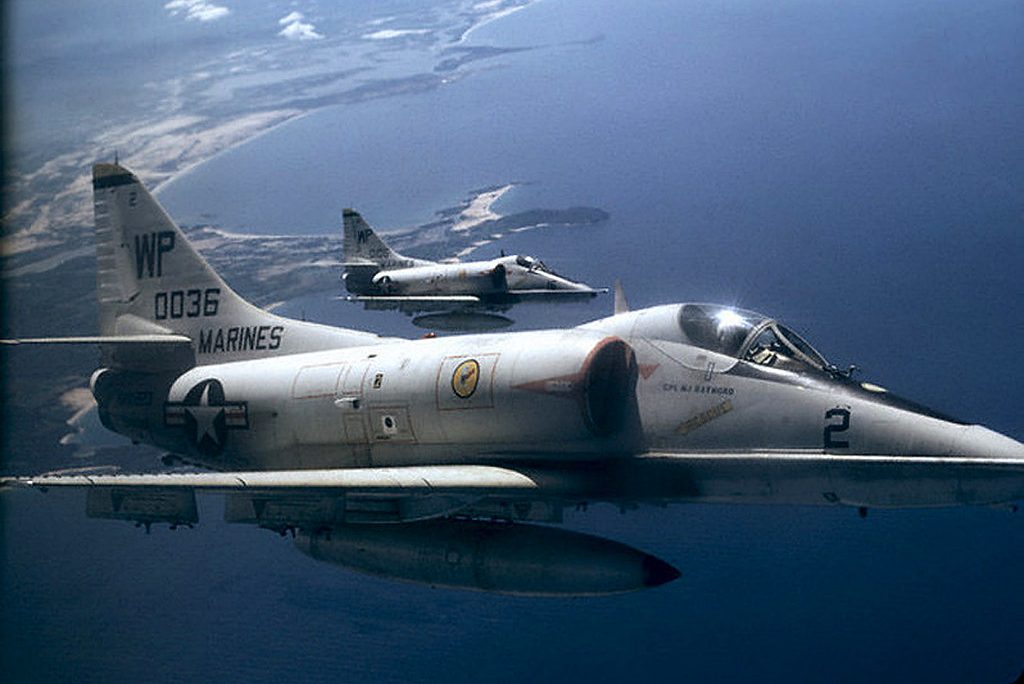
The A-4 Skyhawk first entered service with Navy Attack Squadron VA-72 in October 1956 and swiftly demonstrated its exceptional performance. In 1959, a Skyhawk set a world speed record of over 695 M.P.H. for class C aircraft over a 500 kilometer course. That same year, the A-4C model entered production, featuring improvements in cockpit layout, safety features, radar equipment, and all-weather flying capability. With 638 A-4Cs built, this became the most numerous A-4 model, seeing significant action in Vietnam.

Skyhawks took part in the initial strikes of the Vietnam War following the Tonkin Gulf incident in August 1964. During the conflict, A-4s were relied upon for close air support of ground troops and precision strikes against strategic targets in North Vietnam. The aircraft logged more combat missions than any other naval aircraft during the Vietnam War, with notable pilots like Lt. Cmdr. Michael Estocin, who was awarded the Medal of Honor posthumously for his heroic actions in his A-4.
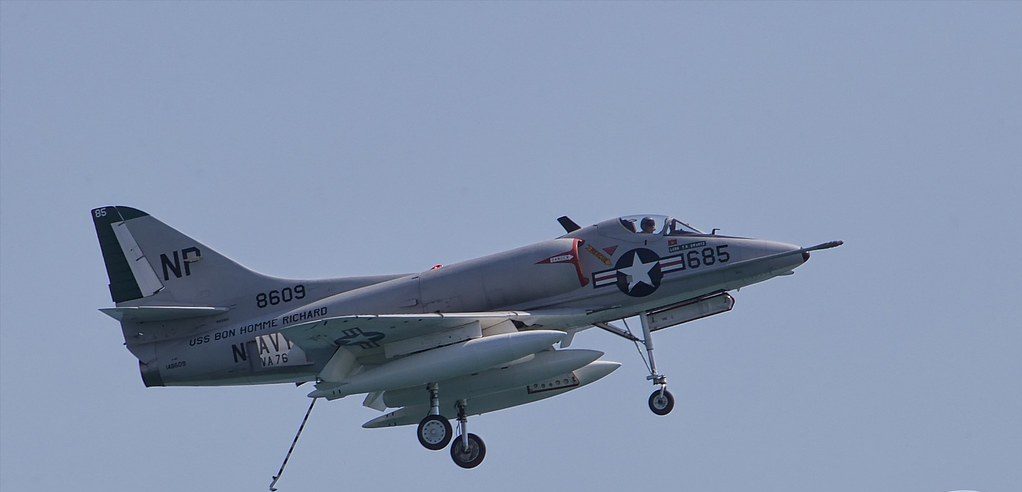
While the A-4 made its mark in Vietnam, it also served in other notable conflicts. It was used by the Israeli Air Force in the Arab/Israeli Wars and by Argentina during the Falkland Islands War. Its versatility and robust performance ensured the Skyhawk was operated by a number of foreign air forces.

A quintessential example of the Skyhawk’s resilience and combat-worthiness was demonstrated by the pilots who were shot down and became prisoners of war, including Commander Everett Alvarez, Vice Admiral James Stockdale, and Captain (later Senator) John McCain. Their courage underlines the significant role played by the A-4 in U.S. military history.

From front line squadrons to its role as an advanced trainer, the A-4 adapted to a variety of missions. Nearly 3,000 A-4s were produced between 1956 and 1979, with over 20 versions delivered to the U.S. military and other nations’ air forces. The Skyhawk’s influence extended to the Blue Angels Navy Flight Demonstration Squadron, which flew the aircraft from 1974 to 1986, showcasing its agility and performance to the public.
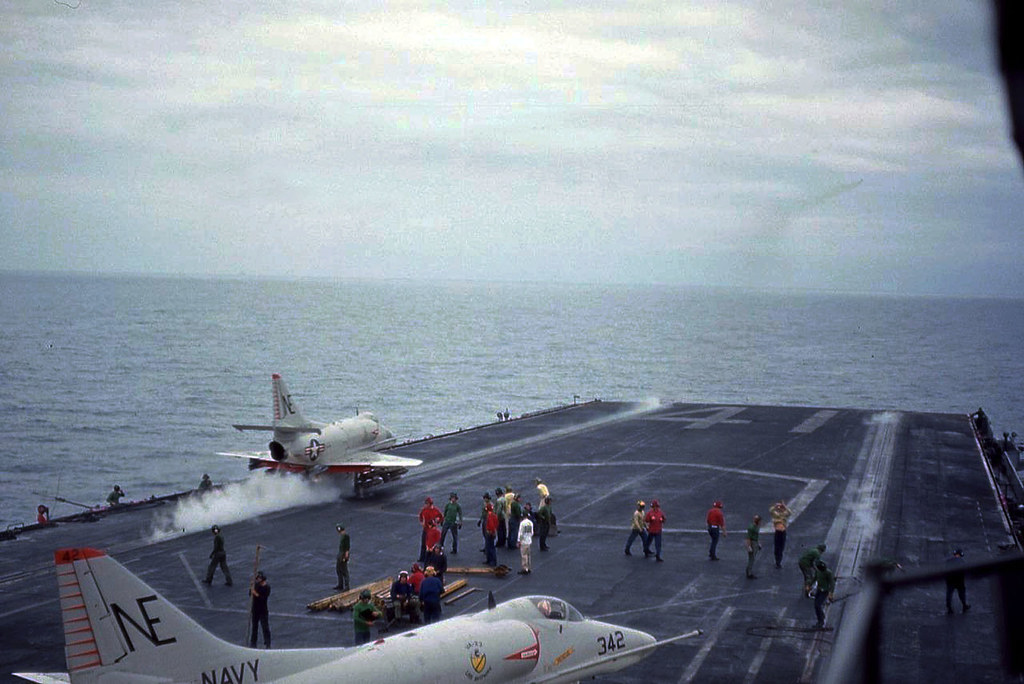
The A-4 Skyhawk’s service ended in 2003, fifty-one years after the initial prototype was commissioned, leaving a legacy of reliability, versatility, and cost-effectiveness unmatched by few aircraft. It remains revered in museums and by aviation enthusiasts globally, symbolizing an era where simple design led to unparalleled battlefield effectiveness.
related images you might be interested.
